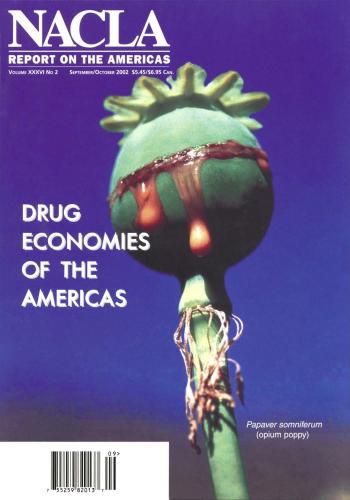Report
Reports of massacres in the Mexican countryside have become alarmingly common in recent years, but a recent incident was among the bloodiest—and murkiest. On the night of May 31, 26 peasants were shot to death in an ambush on a remote dirt road high in Oaxaca’s rugged Sierra Madre del Sur.
It was two in the morning when I was awakened to begin a journey that would take me high into Mexico’s Sierra Madre del Sur and deep into one of the most troubled and remote parts of the state of Guerrero, the region that includes the Petatlán and Coyuquilla river valleys.
Cuernavaca, Saturday, June 13, 1998: At 1:55 in the afternoon I park my pickup truck on Avenida Central, across the street from La Harinera, about a block from the big traffic circle, La Luna. Thinking I’ll be right back, I don’t attach the security club to the steering wheel or check to see if there’s any danger nearby.
Often, divergent intellectual pathways can lead to similar conclusions, and drug policy reform is an excellent example of this. There may be no other issue that draws together such diverse advocates, representing such wide ranging, sometimes starkly opposing viewpoints.
During his campaign for the presidency of Colombia in March 2002, then-candidate Alvaro Uribe announced that he supported the U.S.-backed, multi-billion dollar anti-drug campaign known as Plan Colombia, “because if we do not defeat drugs, they will destroy our ecology, our rule of law, our productive culture, and the future of our youth.”
In many parts of the Americas, the U.S.-led consensus about the “war on drugs” is beginning to fray. This is happening not only in obvious places, such as Bolivia, where the June 30 presidential election catapulted coca grower leader Evo Morales from parliamentary outcast to presidential powerbroker, but across the Americas.
When armed robbers assaulted her store in Rio de Janeiro’s Flamengo neighborhood and cleaned out her entire inventory of eyeglasses and jewelry, Valéria Cristina knew just what to do. She closed up shop and opened a new store with the same name, Lince Optical and Jewelers, in one of Rio’s more than 600 favelas, or squatter communities.

